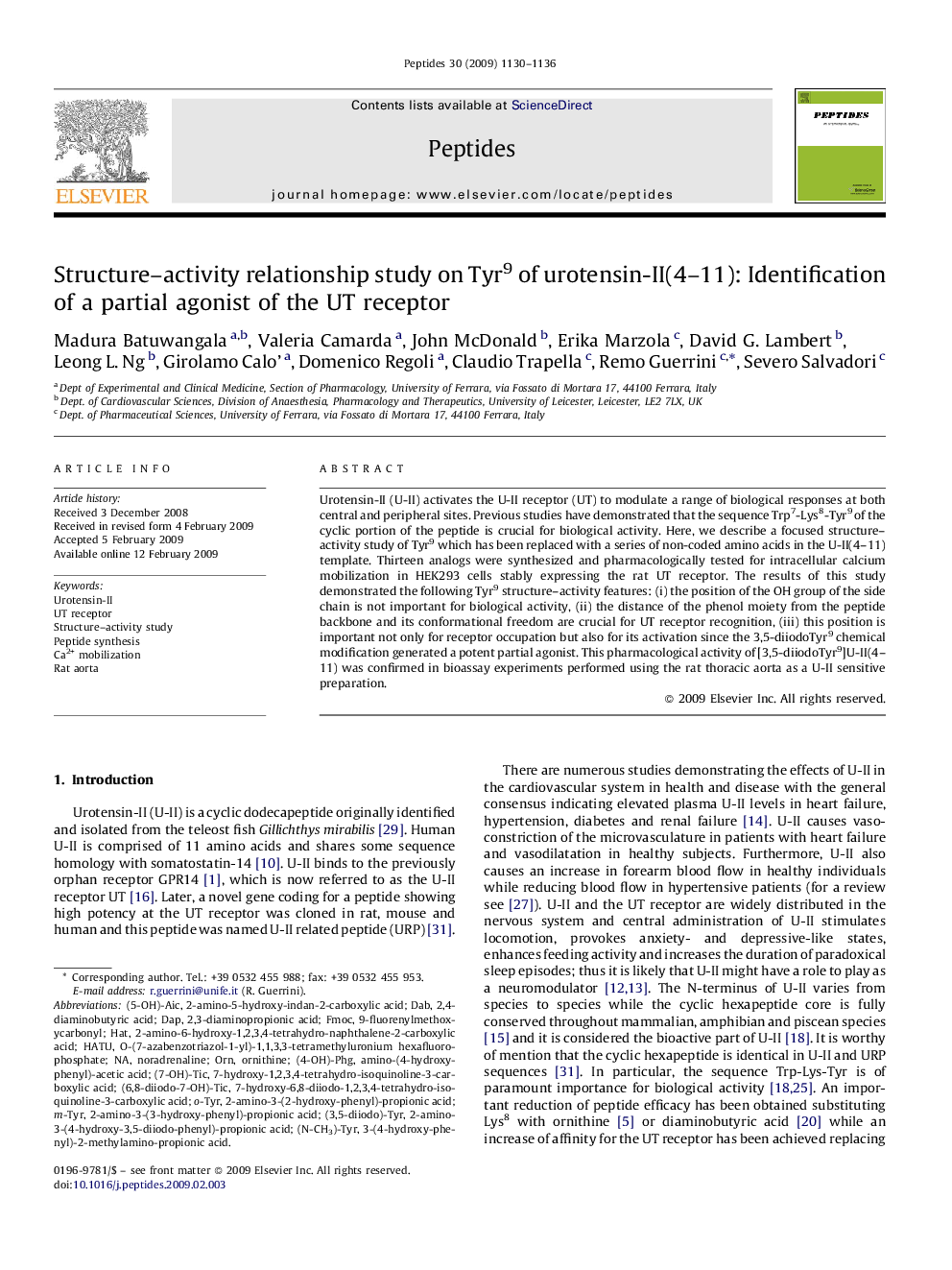| Article ID | Journal | Published Year | Pages | File Type |
|---|---|---|---|---|
| 2006855 | Peptides | 2009 | 7 Pages |
Urotensin-II (U-II) activates the U-II receptor (UT) to modulate a range of biological responses at both central and peripheral sites. Previous studies have demonstrated that the sequence Trp7-Lys8-Tyr9 of the cyclic portion of the peptide is crucial for biological activity. Here, we describe a focused structure–activity study of Tyr9 which has been replaced with a series of non-coded amino acids in the U-II(4–11) template. Thirteen analogs were synthesized and pharmacologically tested for intracellular calcium mobilization in HEK293 cells stably expressing the rat UT receptor. The results of this study demonstrated the following Tyr9 structure–activity features: (i) the position of the OH group of the side chain is not important for biological activity, (ii) the distance of the phenol moiety from the peptide backbone and its conformational freedom are crucial for UT receptor recognition, (iii) this position is important not only for receptor occupation but also for its activation since the 3,5-diiodoTyr9 chemical modification generated a potent partial agonist. This pharmacological activity of [3,5-diiodoTyr9]U-II(4–11) was confirmed in bioassay experiments performed using the rat thoracic aorta as a U-II sensitive preparation.
